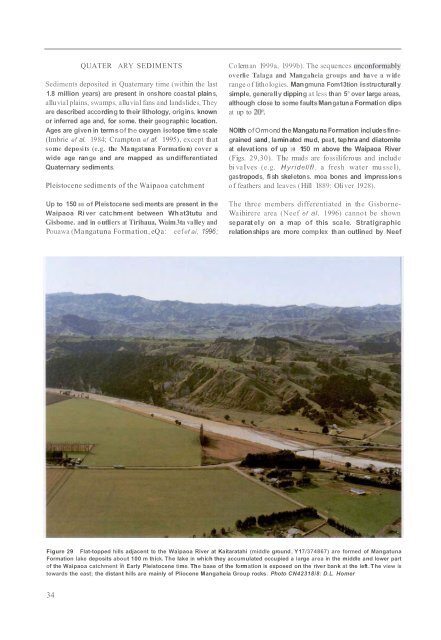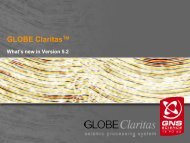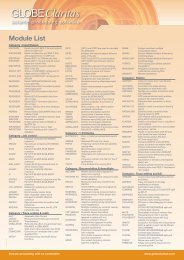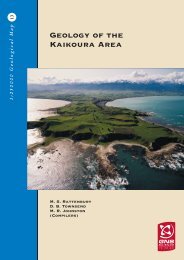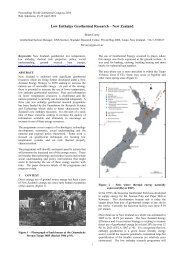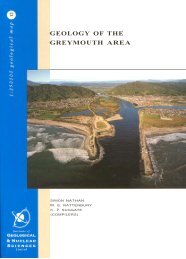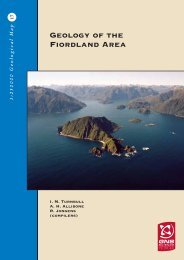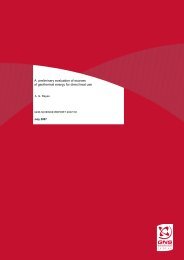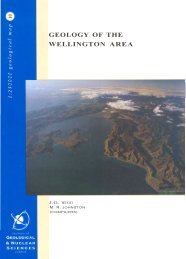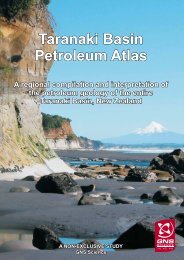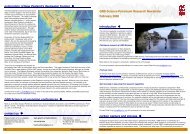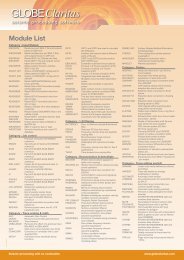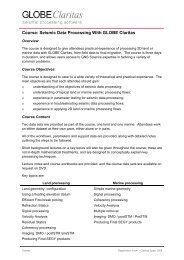GEOLOGY OF THE - GNS Science
GEOLOGY OF THE - GNS Science
GEOLOGY OF THE - GNS Science
You also want an ePaper? Increase the reach of your titles
YUMPU automatically turns print PDFs into web optimized ePapers that Google loves.
QUATERARY SEDIMENTSSediments deposited in Quaternary time (within the last1.8 million years) are present in onshore coastal plain s,alluvial plains, swamps, alluvial fans and landslides, Theyare described according to their lithology, origin s. knownor inferred age and, for some. their geographic location.Ages are given in termsof the oxygen isotope time scale(Imbrie ef al. 1984; Crampton ef af. 1995), except thatsome deposits (e.g. the Mangatuna Formation) cover awide age ran ge and are mapped as undifferentiatedQuaternary sediments.Pleistocene sediments of the Waipaoa catchmentUp to 150 III of Pleistocene sedi ments are present in theWaipaoa Ri ver catchment between What3tutu andGisbome. and in outliers at Tirihaua, Waim3ta valley andPouawa (Mangatuna Formation, eQa: eefef ai, 1996;Coleman 1999a, 1999b). The sequences unconfornlablyoverlie Talaga and Mangaheia groups and have a widerange of lithologies. Mangmuna Fom13tion isstructurall ysimple, generally dipping at less than 5° over large areas,although close to some faultsMangatuna Formation dipsat up to 20".NOlth ofOrmond the Mangatu na Formation incl udesfinegrainedsand , laminated mud, peat, tephra and diatomiteat elevat ions of up 1.0 150 m above the Waipaoa River(Figs. 29,30). The muds are fossilifero us and includebi va lves (e.g. Hyridel/fl , a fresh water mu ssel),gastropods, fi sh skeleton s. moa bones and impressionsof feathers and leaves (Hill 1889: Oli ver 1928).The three members differentiated in the GisborneWaihirere area (Neef ef al. 1996) cannot be shownseparat ely on a map of this sca le. Stratigraphicrelationships are more complex than outlined by NeefFigure 29 Flat-topped hills adjacent to the Waipaoa River at Kaitaratahi (middle ground, Y17/374867) are formed of MangatunaFormation lake deposits about 100 m thick. The lake in which they accumulated occupied a large area in the middle and lower partof the Waipaoa catchment in Early Pleistocene ti me. The base of the formation is exposed on the river bank at the left . The view istowards the east; the distant hills are mainly of Pliocene Mangaheia Group rocks . Photo CN42318/8: D.L. Homer34


